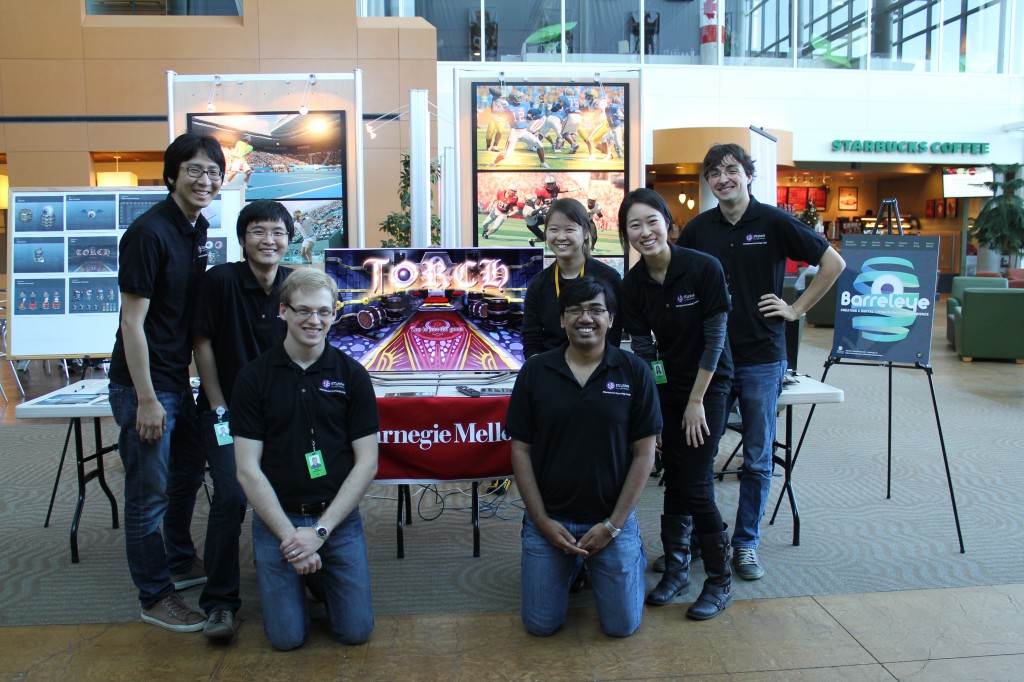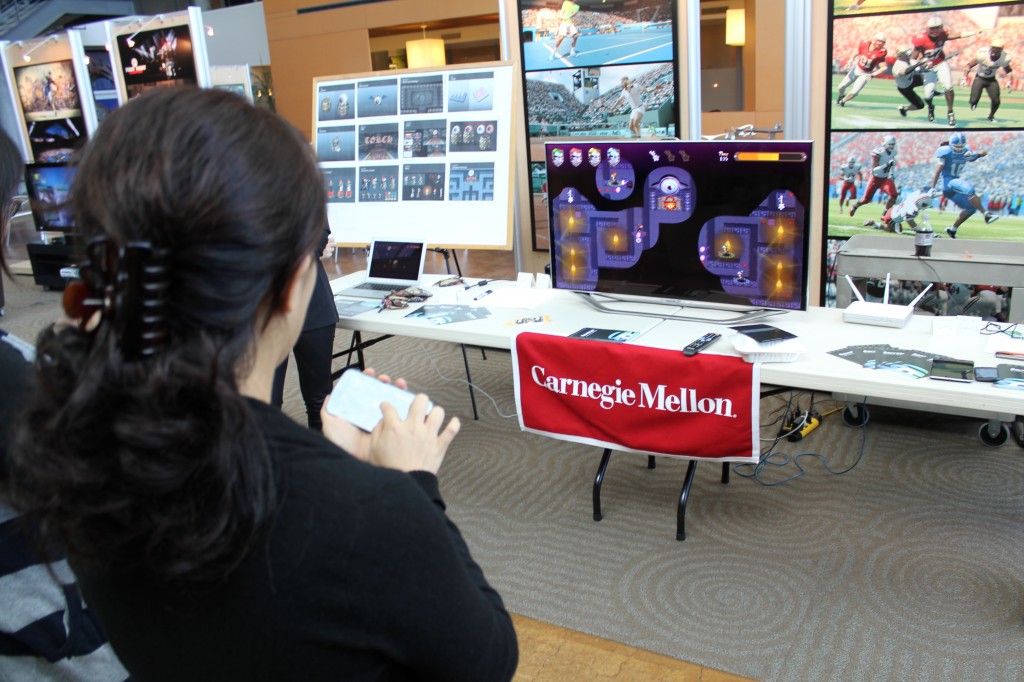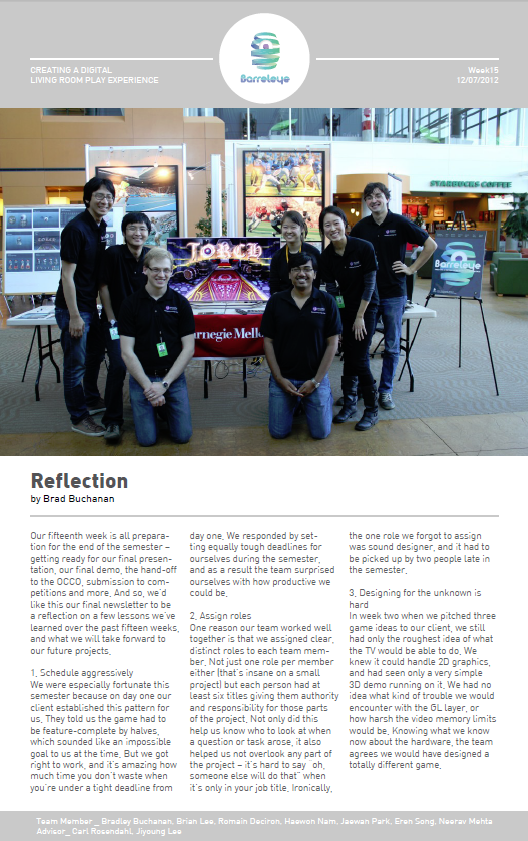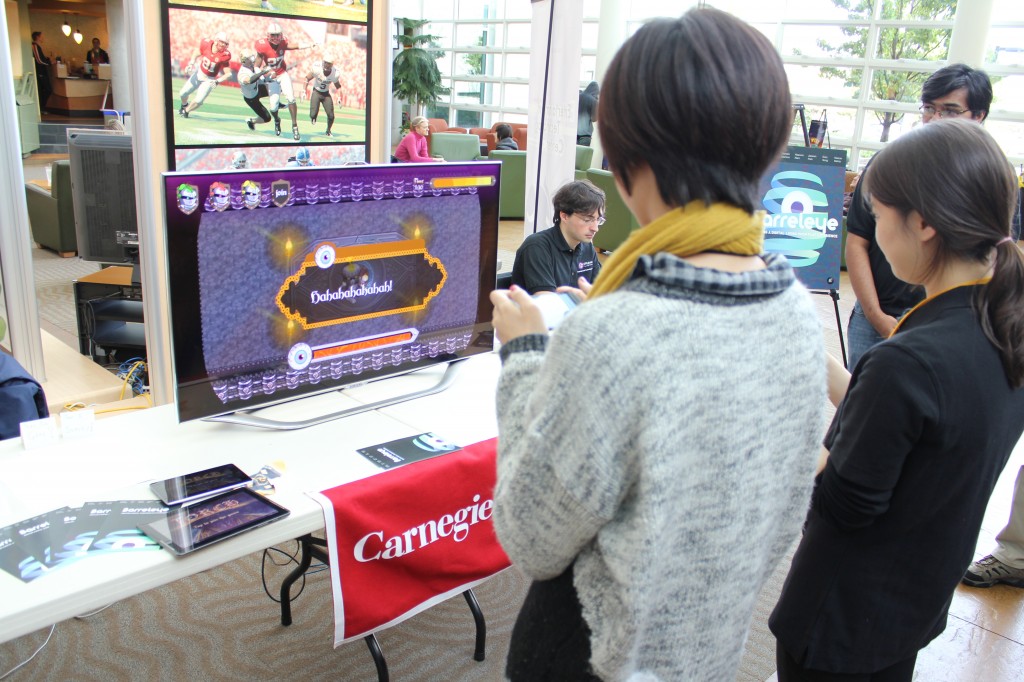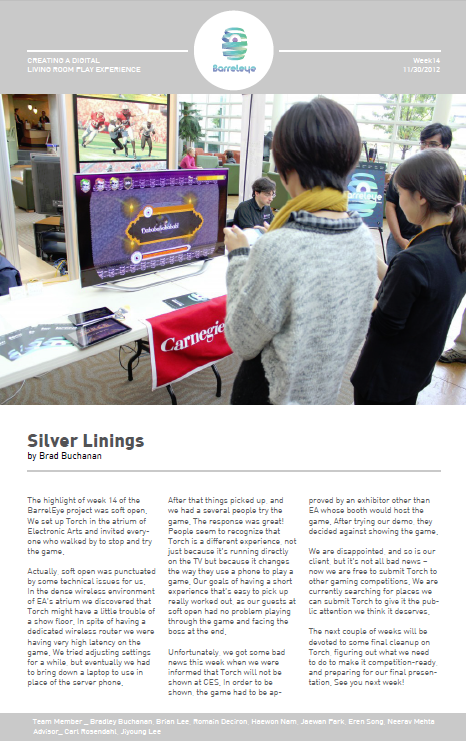On December 12, our team gave our final project presentation for the semester to a packed room of experienced industry people, along with colleagues, friends and family. We were sorry to report that Torch will not be shown at CES 2013, but we enjoyed the opportunity to showcase our work and announced that we will be submitting to other gaming competitions in the near future!
Video of our final project presentation (along with the other two ETC-SV projects for this Fall) is now available on the ETC Silicon Valley blog.


